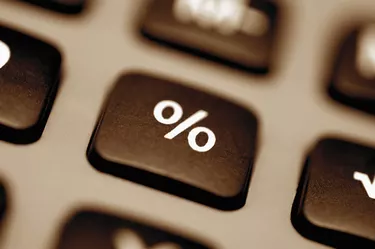
Net present value, or NPV, expresses the value of a series of future cash flows in today's dollars. It stems from the observation that there is time value to money -- people must be compensated to induce them to give up some money now in order to receive more money later. That compensation is interest and the required interest rate used in the NPV calculation is called the discount rate. A higher discount rate reduces net present value. Businesses can use NPV to decide in which projects to invest.
The NPV Equation
Video of the Day
NPV is the sum of periodic net cash flows. Each period's net cash flow -- inflow minus outflow -- is divided by a factor equal to one plus the discount rate raised by an exponent. NPV is thus inversely proportional to the discount factor – a higher discount factor results in a lower NPV, and vice versa. The exponent is the period number: zero for today, one for first future period, two for the second future period, etc. Since the exponent, and hence the divisor, increases with each period, the contribution of each net cash flow in the series to the total NPV decreases with time.
Video of the Day
The Discount Rate
The discount rate is an interest rate that reduces the value of a future cash flow. The way many businesses look at the discount rate is to consider it the opportunity cost of investing the firm's money in a particular project. In other words, what is the best rate of return the firm would experience if a proposed project's funds were used in a different project instead? If we determine that the discount rate should be, say 5 percent, we can use that rate to determine the NPVs of both projects. The higher NPV wins.
Money is Good
The NPV calculation works because it assumes certain attitudes about money on which most people agree. The central assumption is that having money now is better than having it later. When you have money now, you know exactly how much you have. Future money carries risk – for example, how can you be sure of the amount you will actually receive? The discount rate must be set high enough to compensate you for this risk. The higher you set the discount rate, the more you value current money over future money.
Risk Increases with Time
You assume little credit risk when you buy a 30-year U.S. Treasury bond – you can be pretty sure you will receive your interest payments twice a year like clockwork and that the principal will be returned at maturity. But these bonds do carry interest-rate risk: if general interest rates rise, the price of the bond will decline, at least until it approaches maturity. The price of the bond is equal to the NPV of the payments you'll receive. If you think interest rates are going to rise, you will want to use a higher discount rate to calculate the price you are willing to pay for the bond. Higher discount rates reduce NPV, making the bond less attractive.